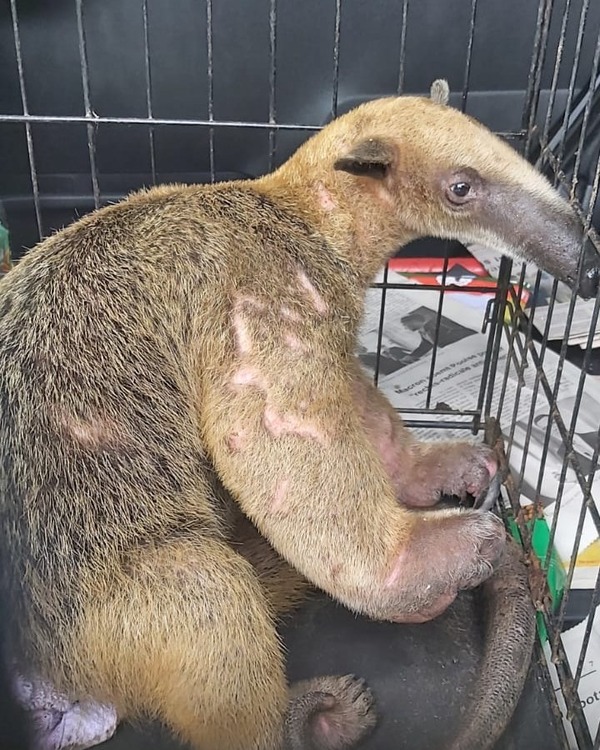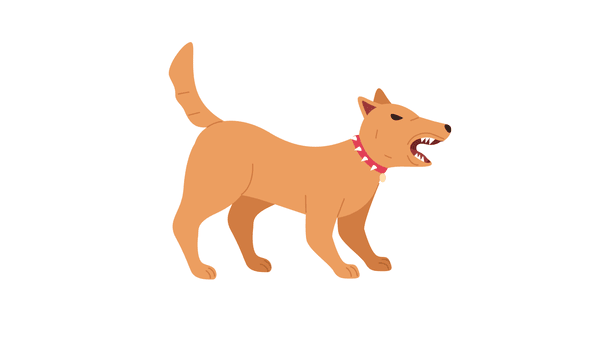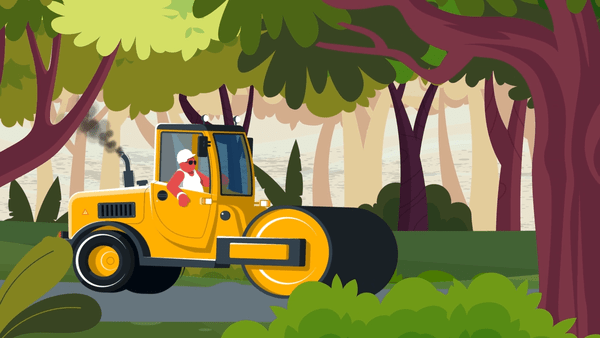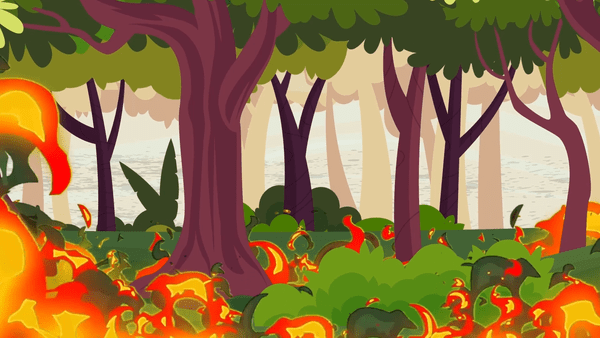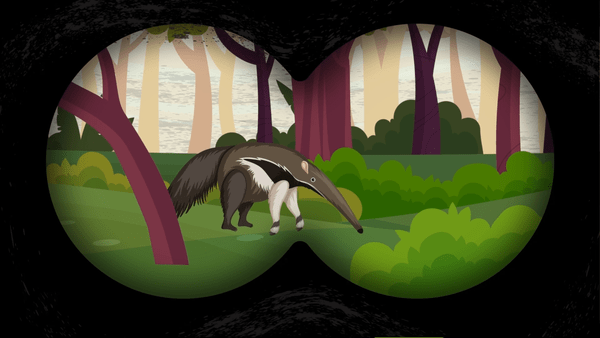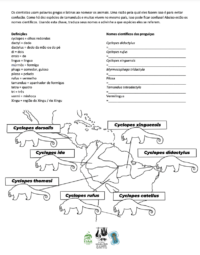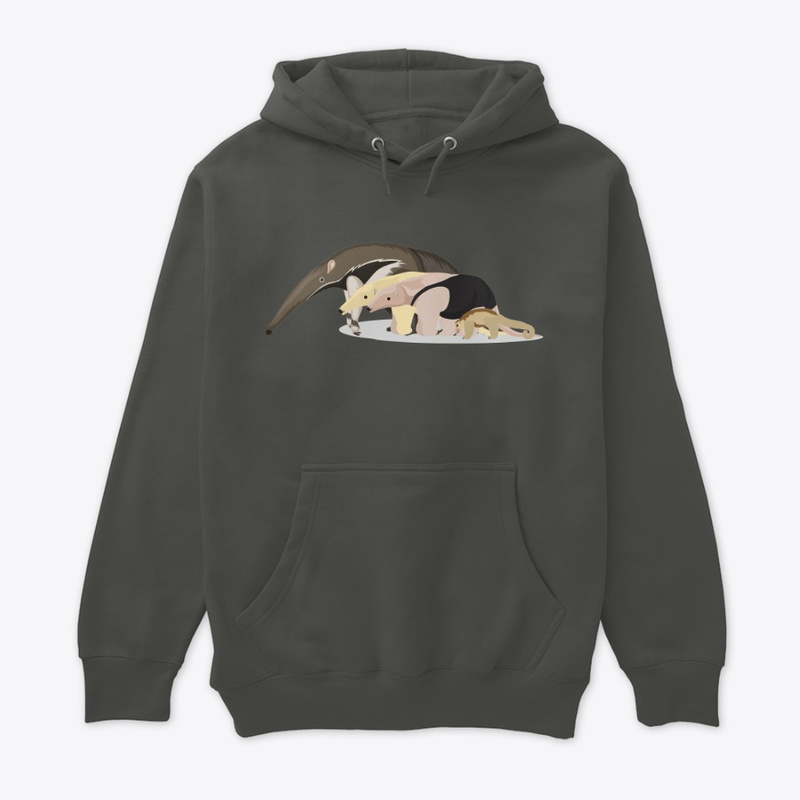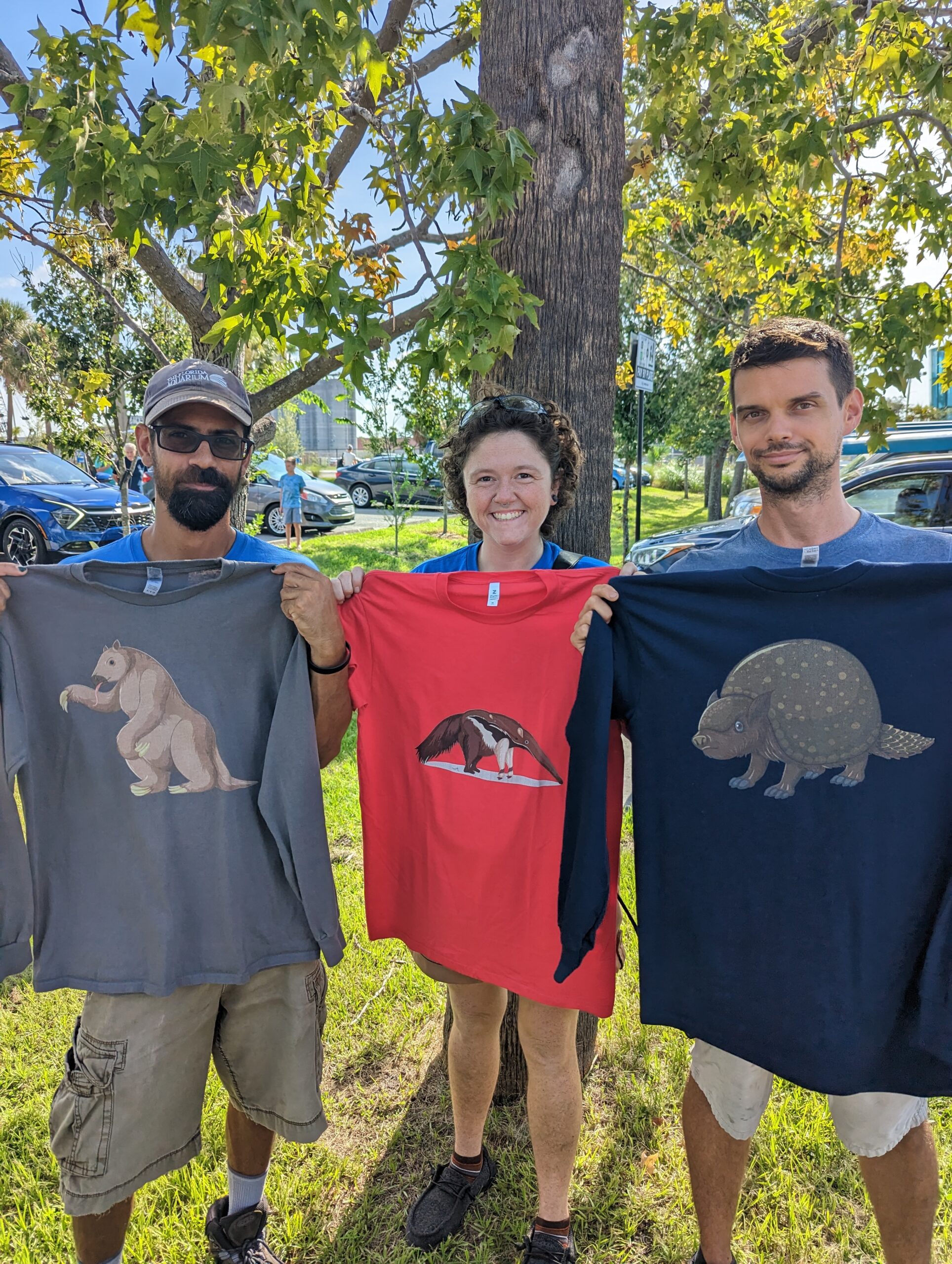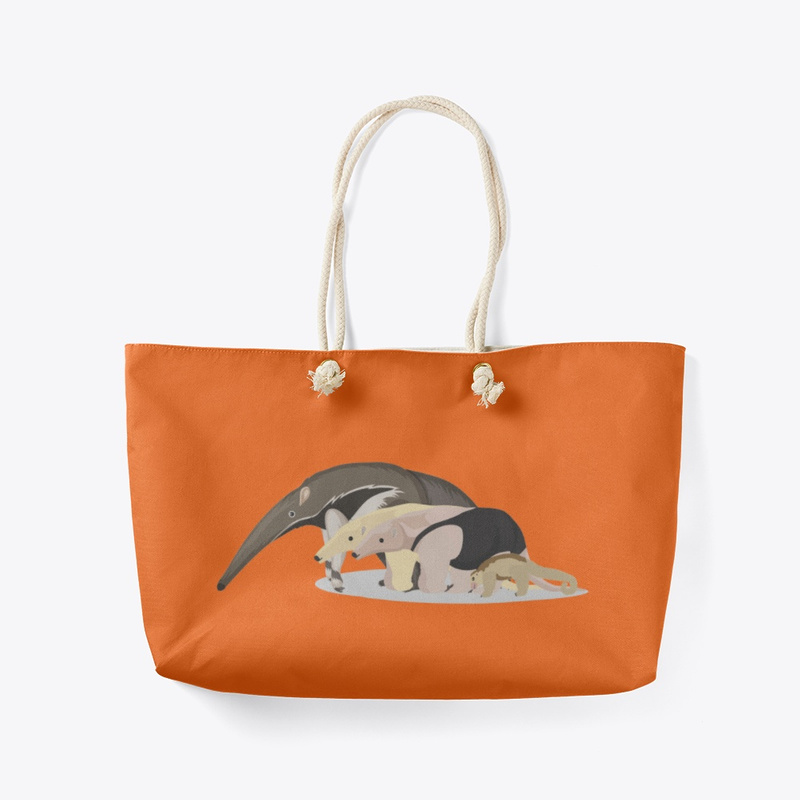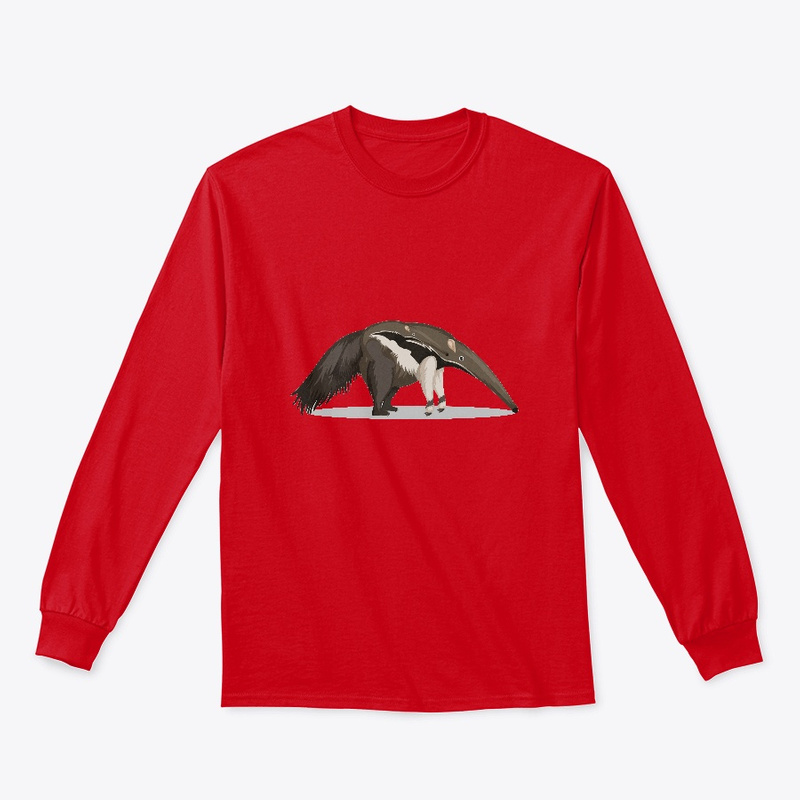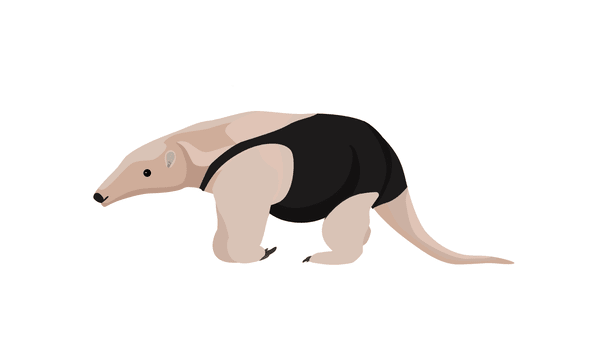
Southern Tamandua
Tamandua tetradactyla
Lifespan: 7-10 years
Reproduction: Capable of reproducing at 2 years of age. Has 1 baby at a time
Size: 3.5–8.4 kg
Diet: Mostly ants and termites and occasionally bees and honey
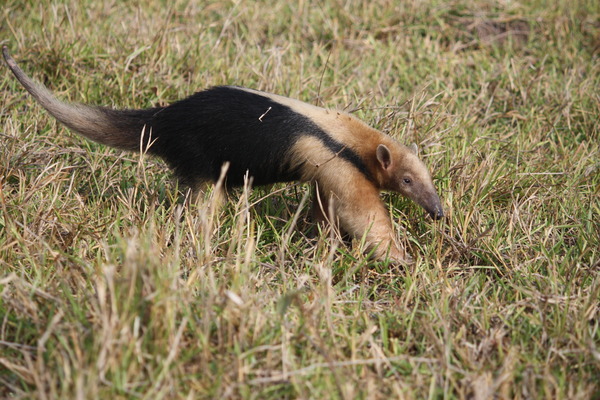
Common Names
English – Southern Tamandua, Collared Anteater, Lesser Anteater, Tamandua
Spanish- Brazo Fuerte, Hormiguero De Collar, Oso Hormiga, Oso Hormiguero, Oso Melero Tamanduá, Tamandúa De Collar
Portuguese – Mambira, Tamanduá de Colete, Tamanduá-Mirim
French – Fourmilier À Collier, Tamandua
Dutch; Flemish – Boommiereneter, Mirafroiti
How to Identify:
| Similar Species: | Tamandua tetradactyla |
| Tamandua mexicana | Tamandua tetradactyla can be uniformly golden, brown or black, to partially or completely black vested |
| Tamandua mexicana has a large dark patch across the back, like a vest worn backward. | |
| Tamandua tetradactyla has 31-39 tail bones. | |
| Can be distinguished geographically because T. tetradactyla range is within South America, east of the Andes, and T. mexicana is only west of the Andes in South America, as well as in Central America. | |
| T. tetradactyla has longer ears 50–54 mm versus 40–46 mm in T. mexicana. | |
| Tamandua tetradactyla is slightly larger than Tamandua mexicana. | |
IUCN Red List
Species are classified into one of nine Red List Categories: Extinct, Extinct in the Wild, Critically Endangered, Endangered, Vulnerable, Near Threatened, Least Concern, Data Deficient and Not Evaluated. Vulnerable, Endangered and Critically Endangered species are considered to be threatened with extinction.

Southern tamandua Facts
• Toothless
• Prehensile tail
• The name Tamandua comes from the language of the Tupi, an indigenous tribe from the Brazilian Amazon River valley, and means ant-catcher.
• T. tetradactyla sleeps in trees or in burrows of Euphractus sexcinctus a six-banded armadillo.
• Tamandua fossils are present in the Pleistocene in South America and Holocene in Central America. Check out our video on Sloths, anteaters and armadillos: the past, present and future of xenarthrans to learn more.
• Tamandua coprolites (fossilized poop!) have been found in Brazil
Habitat
• Agricultural croplands
• Evergreen forests
• Savannah with some trees
• Tropical forests
 Population Trend
Population Trend
• Unknown
 Threats
Threats
- Accidents on roads
- Domestic dogs
- Habitat loss and deforestation
- Hunting (food and trophy)
- Use as pet species
- Wildfires
Here are some ways YOU can help keep anteaters healthy and safe:
– It is best to observe them from a distance and in silence.
– Our pets could attack them. It is important to keep your dog on a leash when you go for a walk, or keep your pets at home in an enclosed and safe area. In addition, taking care of our pets also means spaying and neutering them so that they do not breed without control.
– Anteaters love to live in the woods, keeping them as pets is not good for them. Keep in mind that they don’t like selfies either.
– If you find an injured anteater, contact a wildlife hospital so they can help it.
– If more people ate more bugs, there would be less demand for pigs and cows. Edible insects are better for the environment than large livestock.
Test your new knowledge!
Test your new anteater expertise by visiting our anteater word search, puzzles, coloring sheets and name games!
Check out this video to see how much you have learned!
The Anteater, Sloth, Armadillo Specialist Group has a store that directly helps xenarthran conservation!
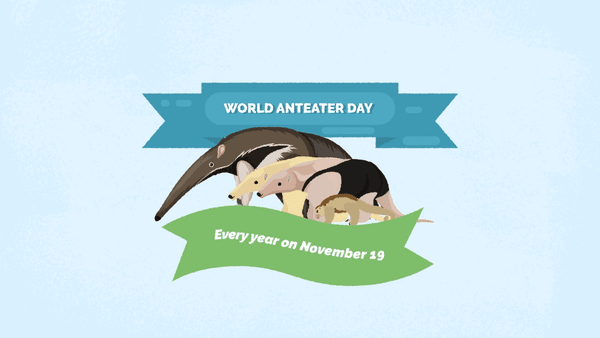

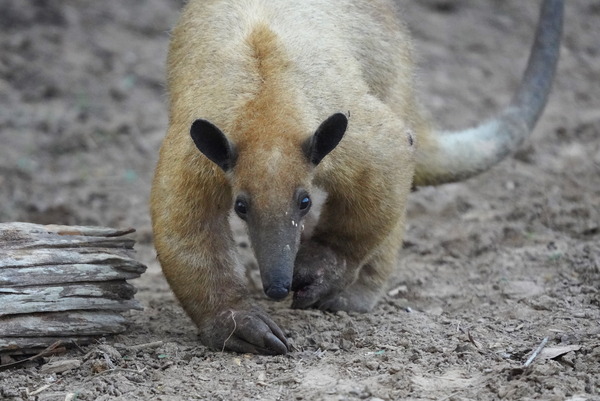
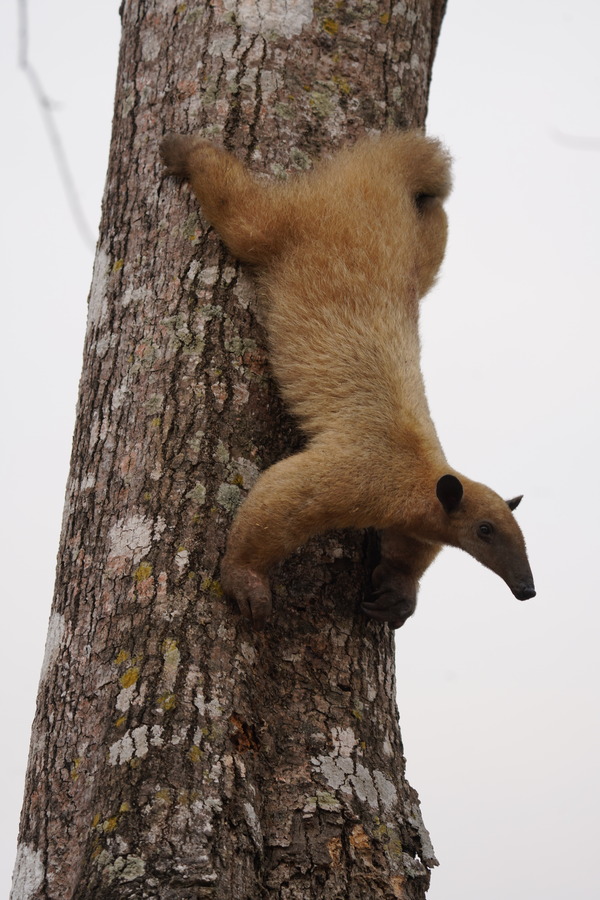
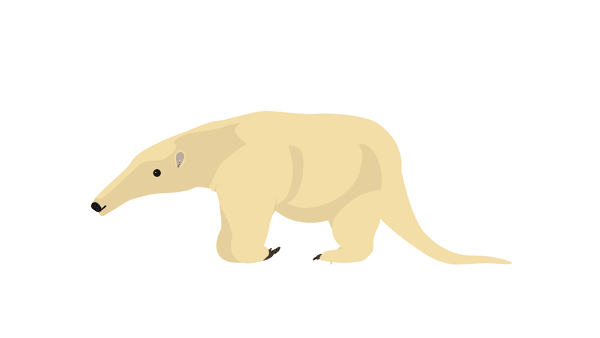
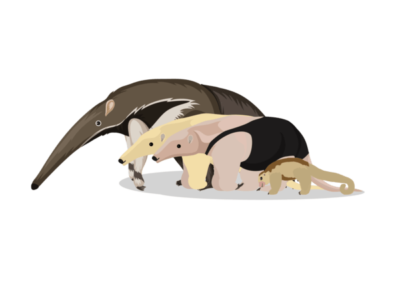

 Population Trend
Population Trend Threats
Threats